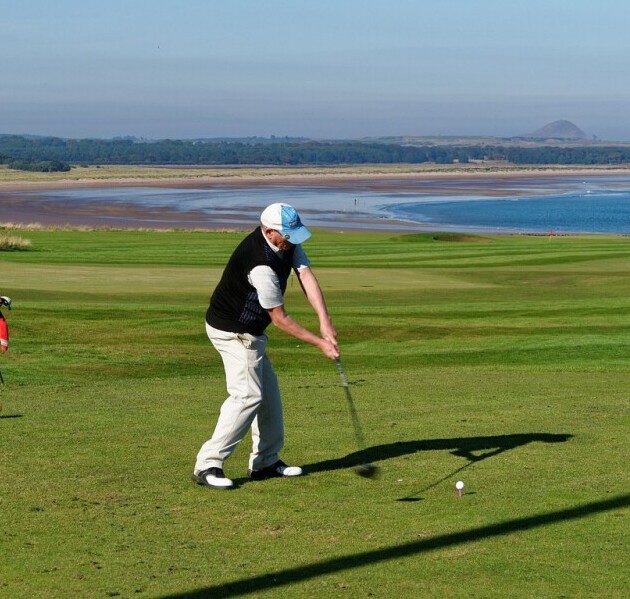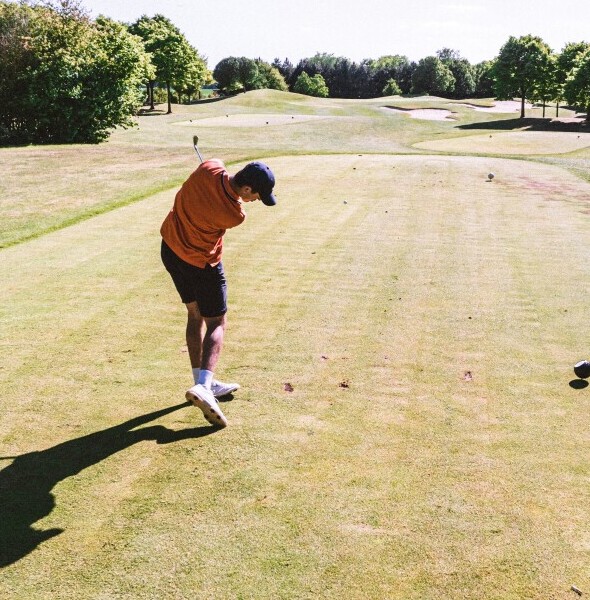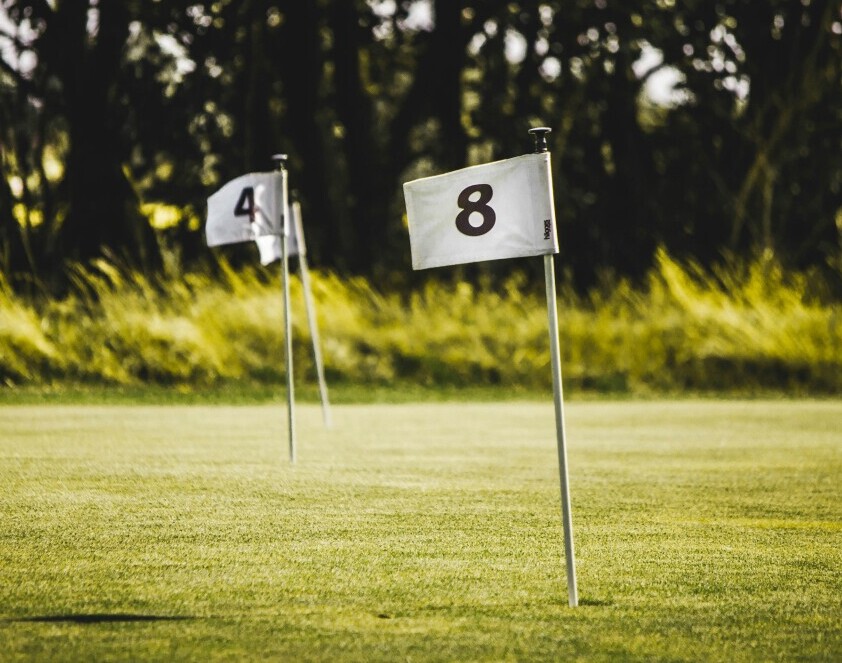What’s A Downswing In Golf?


Fore! Quick note: a few links here are affiliate links. If you snag gear through them, I earn a small commission — no extra strokes added to your game.
The downswing in golf is like that one moment you’ve been waiting for when everything lines up just right. It’s the part of the swing where gravity takes over, guiding the club downwards towards the ball with precision and power. This is where the magic happens; it’s the transition from backswing to the forward swing, unleashing all that stored energy at the right moment. This is the golf viking, and today we’re getting deep into the downswing.
Why’s the downswing so important, you ask? Well, it’s the key to power and accuracy. Without a solid downswing, you’re not only risking a wild shot but also missing out on potential yardage. A well-executed downswing helps in striking the ball cleanly, ensuring it sails where you want it to go, rather than slicing off into oblivion.
Breaking down the mechanics, the downswing starts the moment the club transitions from the top of the backswing. Ideally, the weight shifts from your back foot to your front, hips begin to rotate towards the target, and arms follow through the previously charted path. It’s not just about swinging down; it’s about doing it with control and timing.
Learning from the pros can offer real insights. Take, for example, legendary players like Tiger Woods or Rory McIlroy, who emphasize how crucial the downswing is to their technique. Watching them can offer lessons in rhythm, coordination, and the balance of power and control. Picking up tips from their performances can elevate your own downswing, setting a standard to aim for.
Understanding the downswing isn’t just about the motion; it’s about mindset as well. When you stand at the tee, remember this isn’t just another swing. Visualize the movement, commit to the form, and soon it’ll become second nature. So how is this going to affect your golf game?
The downswing is where power and accuracy come together—see the full motion explained in Mastering the Golf Swing.
Ready to level up your golf game? Click here.

The Role of Downswing: Elevate Your Game
The importance of the downswing extends beyond just hitting the ball; it’s the linchpin for executing perfect shots on the course. This phase of your swing significantly affects how the ball travels, influencing both direction and distance. When done correctly, the downswing allows you to connect with the ball cleanly, sending it on an intended path with the desired spin and loft.
Every phase in the swing, from setup to follow-through, plays a role, but the downswing is where everything comes together. Picture it as the crescendo in a symphony—it’s all about timing and seamless integration with the rest of the movements. This synergy is what stabilizes your shot, making every swing dependable.
Consistency stems from muscle memory, and achieving that reliable downswing requires not just practice but perfect practice. Focusing on repeating the right movement consistently builds confidence, allowing you to let performance take a front seat when you’re out on the greens. Once you have that muscle memory down, your swing will feel more natural and less of a struggle.
Everyone errs sometimes—a hook here, a slice there. Common downswing pitfalls often include overthinking the process or misaligning the body parts mid-swing. Addressing these mistakes involves breaking down each movement, correcting your form, and striving to develop a natural, flowing rhythm. We can start fixing the swing with the proper downswing.
Learning to spot and fix these blunders is a game-changer. By focusing on precision and technique, slowly but surely, you can prevent those repeated errors from sneaking into your game. Embrace every mistake as a stepping stone towards mastering your downswing. Let’s get into how we can work on our swing.
One of the most common mistakes in the downswing is cutting across the ball, leading to slices. Learn how to fix this in The Ultimate Guide for How to Fix a Slice.

Mastering Your Downswing: Techniques and Training
A perfect downswing isn’t just a flick of the wrist but a coordinated movement involving your entire body. Achieving precision requires understanding each element from the moment your club begins its descent. Starting with the transition at the top of the backswing, focus on initiating with your hips followed by your arms and wrists. This chain reaction is key to unleashing your potential power.
Downswing speed is crucial; it determines the power transfer from your body to the club face. Managing this speed comes with understanding that faster doesn’t always equal better. The idea is to maintain a pace that keeps your swing under control and synchronized. Practicing with varied swing speeds can help you find that sweet spot where control meets efficiency.
Developing an efficient downswing involves drills that reinforce the right mechanics. One effective exercise is the ‘pause at the top’ drill, where you hold your position at the top of the backswing for a moment before continuing the downswing. It trains you to initiate the swing correctly via your lower body and allows for better sequencing.
Visualization plays a big role in mastering your downswing. Before hitting, imagine the swing path and outcome, sharpening your focus and boosting your confidence. Coupled with actual practice, it sets a mental blueprint for the perfect swing. Visualizing the swing can help you focus on how you want your ball to go.
Training isn’t just physical—it’s about building a stance that combines technique and mental preparation. Keeping these dual aspects in check helps in crafting a downswing that delivers both powerful and precise results every time. Let’s wrap up the downswing.
Golf training aids can give instant feedback on your downswing path and tempo. Explore effective options in Golf Training Aids and How to Use Them.

Perfecting Your Craft: The Path to a Superior Downswing
Building a regular practice routine is key to refining your downswing. Consistency is everything in golf, so incorporating specific downswing drills into your weekly regimen can steadily improve your performance over time. Dedicate sessions to focus solely on this aspect of your swing until it becomes second nature.
Today’s technology offers exciting tools to enhance your training. Consider using apps and sensors that give immediate feedback on your swing dynamics. This tech can highlight areas of improvement you might overlook and tailor your practice to address those specifics. There are tons of apps available to analyze your swing so you can make adjustments that will help fix your mistakes.
Expert insights can’t be underestimated. Regular lessons with a golf coach or seasoned player can reveal nuanced adjustments that make all the difference. Their experience brings perspective, especially in detecting subtle flaws in your downswing that can affect consistency and power.
It’s worth remembering that mastering the downswing doesn’t happen overnight. Face challenges head-on with patience and determination because every golfer experiences frustrations at some point. However, persistence and commitment are your best allies in turning challenges into triumphs. You won’t become a pro golfer in a day, so continue to work on your swing and you will begin to naturally hit the ball with confidence.
The journey to improving your downswing is ongoing. Keep refining, practicing, and learning. Celebrate small victories along the way—they’re the stepping stones to achieving a flawless downswing. I’ll see you out on the golf course, with that beautiful downswing leading the way.
The downswing doesn’t stop at the full swing—it also impacts putting rhythm. Improve your stroke with Tips for Putting in Golf.


